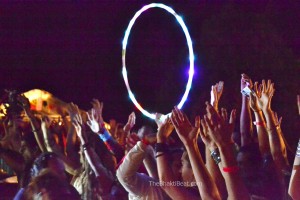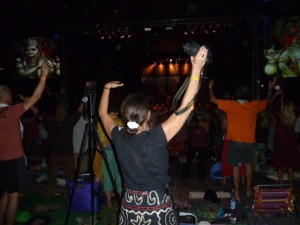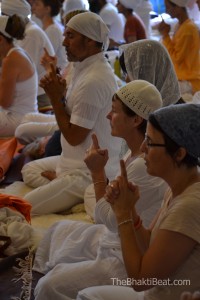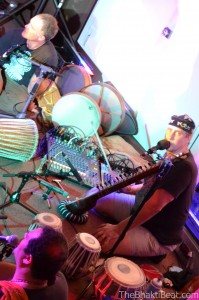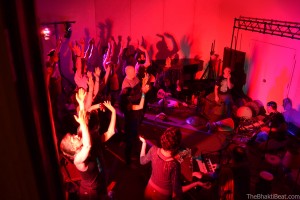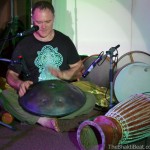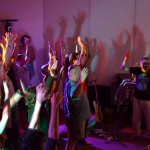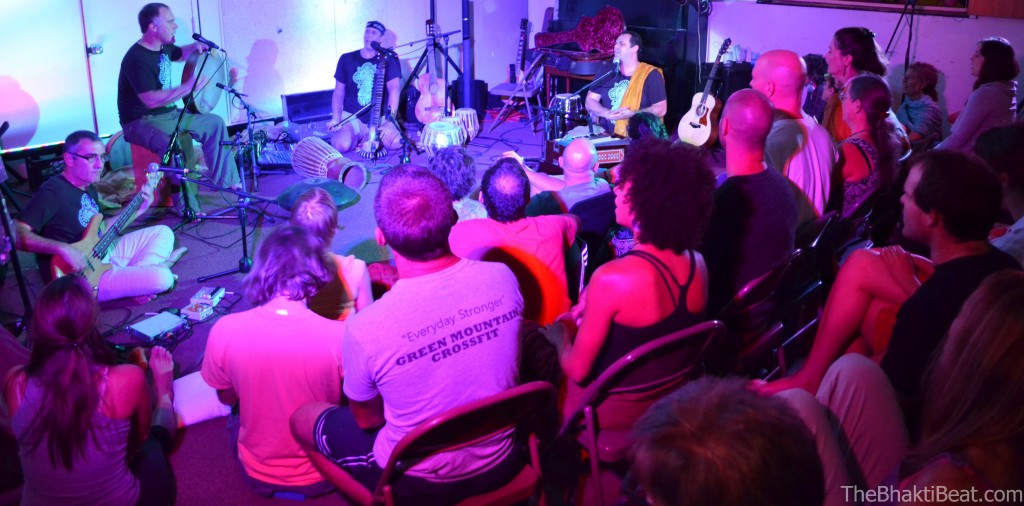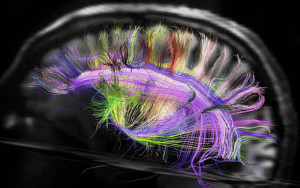 Scientists have definitively identified, for the first time ever, a rare but rapidly increasing brain disorder affecting the frontal lobes, amygdala and hippocampus of people who regularly chant kirtan.
Scientists have definitively identified, for the first time ever, a rare but rapidly increasing brain disorder affecting the frontal lobes, amygdala and hippocampus of people who regularly chant kirtan.
Publishing in the Journal of Neuroscience and Non-Duality, lead author Baba Bhavakirtanananda, a former saddhu who spent 20 years chanting the Maha Mantra nonstop in a cave near Braj, India, before accepting a research position at the University of Vrindavan, even coined a term for the condition: bhav brain. Symptoms of bhav brain include markedly decreased attachment to one’s self-identity, blurring of the demarcation between “self” and others, disillusionment with materialistic gain, and reduced anxiety about what the future may bring. In extreme cases, Bhavakirtanananda said, bhav brain can produce symptoms that can mimic intoxication or drug use, including inexplicable elation, stumbling or aimless wandering, or general “spaciness.”
These symptoms, he said, explain why people who have been chanting for many hours — as is common at kirtan festivals — are sometimes described as “stoned on the bhav.”
The scientists reported that they had also identified a potent neurotransmitter that seems to be expressed in excessive quantities after prolonged chanting, which they have accordingly named bhavatonin. They found bhavatonin-specific receptors in the hippocampus, where the biochemical seemed to trigger a remembrance of one’s own divine nature, and in the amygdala, where it apparently tamped down fearful reactions and anxiety.
Long History in India, But New to the West
Historical documents suggest that bhav brain has been around since at least the 15th century; there are oblique references to the symptoms in sacred texts in the vedic traditions and in the works of so-called bhakti poets like Hafiz and Mirabai. But the syndrome of symptoms has only recently been observed in the West — first in an area of New York’s Hudson Valley known as the Bhajan Belt, and then in Southern California, especially around the town of Joshua Tree. More recent evidence suggests the condition is spreading — last summer there was a flurry of reports from Madison, Wisc. of chanters driving in circles, heading in the wrong direction on the highway, and unable to use simple machines like gas pumps. The geographic and temporal distribution of these reports is closely associated with large-scale chant festivals.
That’s no coincidence, says Bhavakirtanananda. He said he had long suspected there was a signature biological “fingerprint” associated with the syndrome, and was frustrated that no serious scientist had attempted to investigate it. So he took it upon himself, first investigating it in a pilot study at India’s legendary Kumbh Mela festival before traveling all the way to Southern California to study attendees at a 4-day festival where the chanting was virtually nonstop. His team recruited 100 men and women ranging in age from 16 to 97 (median age 39), and conducted functional MRI scans before, during and after the festival.
Prevalence is Rapidly Increasing
In the article, the authors noted that the prevalence of the condition — virtually unknown in the West until recent years — has been rapidly increasing in step with the growing popularity and “mainstreaming” of bhakti yoga, an obscure form of yoga from 15th century India that eschews the Western yoga world’s fixation on having a really great butt in favor of an emphasis on loving devotion and seva, or selfless service.
Reactions from the bhakti community have been mixed. Kirtan musician Dave Stringananda said he was not surprised. “I’ve been fascinated for years by how chanting might be affecting neurotransmitters like anandamine and serotonin, so the idea that there is a brain chemical called bhavatonin that is specifically ramped up by kirtan makes so much sense. I am elated.” Stringananda immmediately set to work incorporating the findings into a new workshop series.
Skepticism in the Bhajan Belt
In Woodstock, N.Y. in the heart of the Bhajan Belt, long-time kirtan wallah Sri Sri Ramanananda dismissed the findings as overhyped hogwash. “Symptoms of a disorder? Pshaw! Here in Woodstock, these kinds of behaviors are as common as peacocks in Vrindavan,” he said. “If ‘bhav brain’ is a disease, then I’m a monkey-god’s uncle.”
The Bhakti Beat asked the members of the popular ensemble band The Hanumen, fresh off a regional tour that included stops at a prison and a psychiatric treatment facility, to comment on the research, but a spokesperson said the band was covered in mud on a beach somewhere and couldn’t be reached.
The Chant and Chill Foundation issued a statement praising the research as an important step forward in understanding what’s going on in the brain of a bhakta: “This continues to be one of the deepest mysteries of the universe — just look at those Hanumen. We are delighted to see that someone is finally putting some real effort into it.” The foundation plans to start a campaign encouraging hard-core bhaktas to donate their brains to research in hopes of advancing scientific knowledge about bhav brain.
Stay tuned to TheBhaktiBeat.com for more on this developing story. Because no one knows bhav brain like we do…
If you like this, you might also like “10 Signs You Might Be a Kirtan Addict”
The Bhakti Beat needs your support! We are non-commercial and not-for-profit, a free service to the bhakti community that is completely self-funded save for the loving contributions of Bhakti Beaters like you. Your support is critical — please share the Beat with your bhakti peeps, connect with us on social media (links below), and consider a one-time or recurring donation (DONATE HERE) to help us keep this bhav boat afloat. Thank you from the bottom of our bhav brain. In loving service...
Hare Krishna Hare Krishna Krishna Krishna Hare Hare Hare Rama Hare Rama Rama Rama Hare Hare
Dear Lord, kindly engage me in your service.
Follow The Bhakti Beat on facebook Follow The Bhakti Beat on twitter Subscribe to our YouTube channel Find us on Google+


